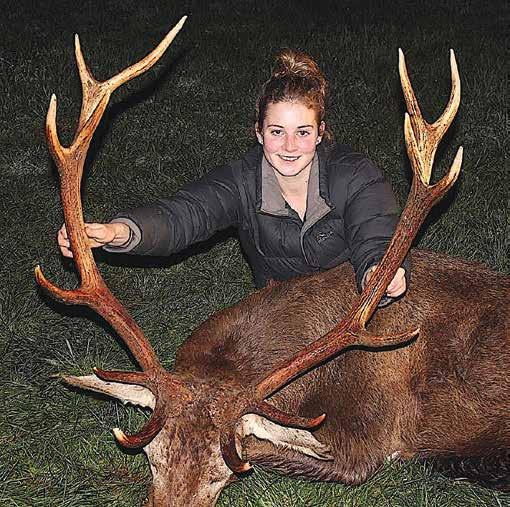








Every other man and his boat were there—the boat ramp… queued for 45 minutes just to wet the bum of the boat. Clearly, we all had the same idea; an early
With just me and my eightyear-old son Josh tucked up in our little boat, a far off adventure was not in the making so we nestled in near the fairway beacon, in 17m. Josh just lives, eats, and one day would like to have a bigger boat so he
At around 10.30am, Josh got some good bites on his rod, followed by a solid hook up and we went into action. Josh battled the big brute while I readied the gaff. And it was a big brute… a big brute of a snapper estimated at around 19lb. But, it was to be the classic ‘one that got away’
story, because the hook dropped off the line and Josh was gutted.
Josh was not to be defeated and quickly employed another Black Magic Snapper Snack Skirted Flasher Rig on his Okuma Revenger Pro Rod, and the bait was promptly chomped fought it bravely but after a
into the contest. Another eight minutes of grappling and victory was ours; Josh had his PB snapper—a whopping 22lber!
Josh’s grin stretched further from ear to ear and couldn’t wait to get home to share his a stunning day but time to draw it to a close early; we were both a little tired and, besides, we don’t like to be greedy.
Bevan Simmons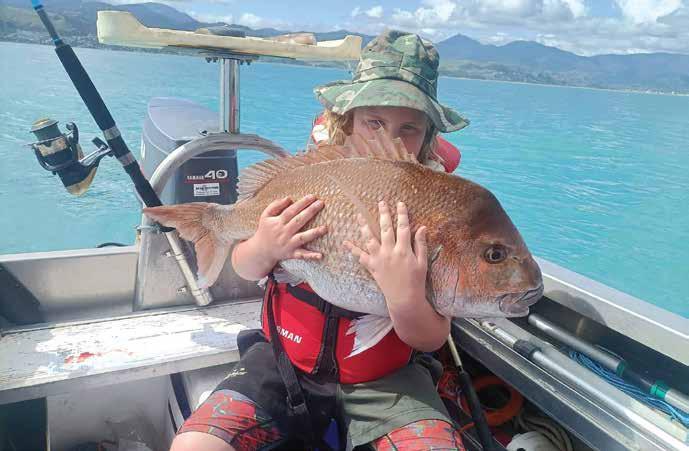
were accompanied by
when the forecast for
dive mates and I were
could be rewarded with the
arrived, we suited up and quickly got into the water. However, I noticed immediately that the visibility was terrible,
Nevertheless, we were determined to give it a try. After a few minutes, I found a spot that looked promising for moki and dove down to take a closer look.
Carefully, I positioned myself behind a rock and stirred up some sand. The commotion attracted the attention of a large moki, which quickly swam over to investigate. Unfortunately, I was running out of breath
to get a shot. I managed to
 Daniel Crimp
Daniel Crimp
to the surface, but the searched the area, hoping but, with the large swell and poor visibility, it was nearly impossible.
looking at all the undersized pāua, I caught a glimpse of something. As I turned, I saw a nice-sized moki gliding past. It wasn’t the monster but it was also well over the size limit and would look good on a plate, so I waited for it to pass my gun and gently squeezed the trigger. The shot was perfect, swam over to my buddies to check on their catch. They had caught two more moki
We had planned to meet
up with another dive group at a different spot, so we quickly hopped out, drove over there and jumped in. Unfortunately, the visibility was even worse, but with eight of us spread out in pairs, we were bound to catch something. After about an hour of exploring the shipwrecks, tangling ourselves in kelp and playing with the seals, we regrouped to show our haul. We ended up with a bountiful harvest of one moki and 12
certainly felt like it when it once they were battered and served with chips to eight starving uni students, plus a couple of extras, they were quickly devoured. With a beer in hand

and our stomachs full, we recounted stories from the day and planned for the
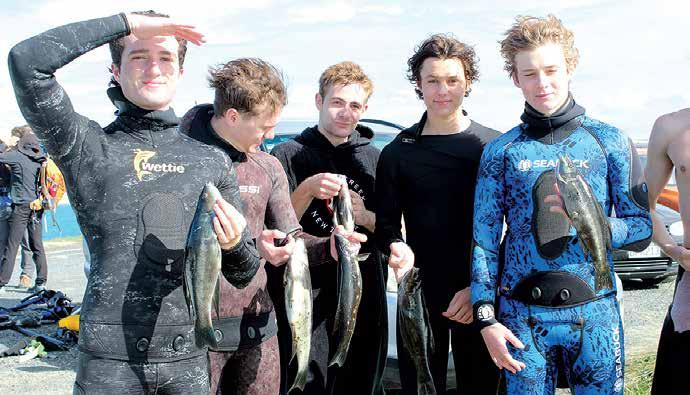









The New Zealand sea lion/ rāpoka, a taonga (treasure) species, is one of the rarest sea lion species in the world and is classified as nationally vulnerable.
Historically, sea lions have faced several human related threats, including being hunted by Māori and commercial sealers, and incidentally caught in trawl fisheries. In recent years, environmental stressors like disease and ocean change have put greater strain on the survival of this species.
Over the past 30 years, the seafood industry has been committed to reducing impacts on the sea lion population, through the development of mitigation tools and e ective management.
The New Zealand southern squid fishery overlaps with the foraging range of sea lions, on the two relatively small but important fishing grounds adjacent to the Auckland Islands rookeries and outside of the 12 nautical mile Marine Reserve.
(Part 1) Ben Steele-MortimerSea lions are sometimes observed following fishing vessels, pulling fish out of the net while it is being hauled and anticipating discarded fish waste. Ever since the fishery was discovered in the mid-1970s by scientific survey vessels, sea lion interactions have been reported.
In the early 1990s, New Zealand sea lion captures in the Auckland Island or southern squid fishery (SQU 6T) caused great concern to the seafood industry, with an estimated 70-140 sea lions being caught in the nets annually.
At the time, few measures in place adequately reduced the risk to these marine mammals and the monitoring of the fleet was relatively poor, with low numbers of government observers present in a fleet of up to 50 vessels.
The Southern Squid Fishery Operational Plan was implemented in 1992, setting a limit on the number of sea lion captures that, when reached, closed the fishery for the remainder of the fishing year. Motu
Maha Marine Reserve was also established within the Territorial Sea, which provided further protection, noting however that fishing did not occur within 12 nm.
Since the 1990s, the sea lion population has been extensively studied, and science undertaken by DOC, MPI and NIWA, comprehensive and robust. There are estimated to be around 9,850 NZ sea lions in New Zealand (including 2,000 breeding females), with about 68% of the entire population breeding on the Auckland Islands.
Concern increased as to the viability of the sea lion population.
Over the past 20 years in particular, Industry and government have made significant progress to reduce risk to sea lions.
Introduction of Sea Lion Exclusion Devices (SLEDs) around 2000 became one of New Zealand’s most successful fisheries incidental capture mitigation strategies, recognised globally for its e ectiveness.



Today, as a result of the work of industry, government agencies and the engagement and cooperation of the deepwater fleet, the risk to sea lions from fishing activity is significantly reduced. SLEDs are designed to allow sea lions, once inside, to exit squid trawl nets (Figure 1). Initial designs were based on turtle exclusion devices used in the Australian prawn fishery and were altered to suit the physiology of sea lions and the larger trawl nets.
Strict rules replace ad hoc
With government support, Deepwater Group and its operators began implementing SLEDs across the entire squid fleet. Initial deployment was ad hoc with no standards, specifications or checks. Since 2006, Deepwater Group has required that certified (i.e. annually checked and manufacturer-approved) SLEDs be used in the SQU 6T fishery at all times. SLED use in the SQU 6T fishery has increased from 44% of tows in 2002 to 100% of tows from 2006 onwards

(Thompson et al 2015).
This full rollout of certified SLEDs has resulted in a substantial reduction in the number of observed sea lion captures; from 1 capture per 100 tows in 2005 to an average of less than one capture per 1,000 tows after 2010—with 100% observerreported adherence to the SQU 6T Operational Plan in recent years. In addition, after 2013, observer coverage in SQU 6T increased from around 30% to 90%, improving the certainty and quality of information reported. Studies indicate most sea lions survive following an exit from SLEDs.
DOC leads a field project to count sea lion pups on the Auckland Islands between February and March each year, at a cost of between $150,000 and $300,000 annually. Quota owners meet 90% of the cost—the government, the balance.
Since 2003, the industry has contributed over $4 million to monitor the

population.
In the late 1990s when population monitoring became routine, there were increasing pup counts on the Auckland Islands. This was followed by a gradual decline in numbers after 2002, with an outbreak of Klebsiella pneumoniae— while at the same time, the fishing fleet was decreasing in size and capture rates of sea lions were declining. In 2014, the pup count dropped by 18% on the previous year and was the lowest count since 1995.
Sea lions are facing multiple challenges. Next month we will find out what more is being done to help understand these taonga species and threats.
Additional information may be found at the links below.
https://www.doc.govt.nz/ globalassets/documents/ science-and-technical/ nztcs29entire.pdf
https://www.deepwatergroup. org/wp-content/ uploads/2018/11/MMOPVersion-9-2.pdf
https://www.mpi.govt.nz/ dmsdocument/38189/direct
https://www.moanaproject.org/ recent-marine-heatwaves

drop’ may be a thing of the recently come into a league of its own.
Fishing the depths with my brother-in-law, we were confronted by a potential problem: a knot in the line. Commonsense would
suggest it might be prudent to address the situation on account of the fact that Murphy loves opportunities like these—a knot equals

a weak spot, which would invariably attract a monster bust-off. Possibly.
Electing to get to the bottom of this—or rather, the middle—we had to cruise out to 400m so we could pay out enough line in order to untangle the knot. Always an opportunist, I made sure the terminal or business end was baited—well, you just never know—and let out line.
“Imagine if we lucked onto a groper hole!” I joked to bro’-in-law.
Well, we didn’t. Luck onto a groper hole, that is.
The rod gave a mighty thump and bend though and we were in for one hell of a stoush. Eventually, colour spiralled toward the surface and we we rewarded with
30kg!
Having marked the spot, we set up a few more drifts and ultimately came away with friends and family.
It was a bit of a long ‘drop’ but it paid off.
Hospice nurses and volunteers working together can help patients remain in their own homes.
Nelson Tasman Hospice is seeking “Hunting Shooting Fishing” volunteers to join our patient support volunteer team .
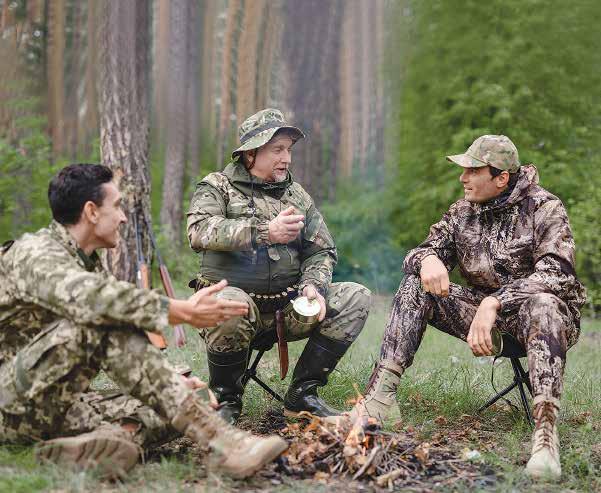


Usually 2-4 hours during

exhausting hours to land. I must have been shattered, because I forgot to take a photo—just a video of it swimming away.
X surfcaster. It put up one hell of a solid

mate Travis Gaffney, who landed a nine-foot six-inch bronzie on 50lb gear, after a 50 minute battering, last season.
This season, we started up in gear to a Penn Senator with 80lb braid. We use 360lb tough mono trace and 14/0 circle hooks; haven’t been bitten off yet.
Using a large fish head, I hooked a ray that I reckon was 150lb plus, easy. That took me 30 minutes to land. The same night I met a guy who’d hooked up something big not long after, first cast too.
He’d snagged it on 80lb line so it took awhile to subdue. I helped him land it and together we reeled in a beautiful nine-foot one-






inch bronzie, which was the biggest caught this season, that I’ve heard about.
My girlfriend came with me a couple of nights later and I duly cast out the bait. Everything unfolded quite quickly and 35 minutes later I’d landed, admired, and released a seven-footer.
Not long after that, I went back down with Travis and hand-lined a bait out. After an hour, the reel screamed and we were in for tussle.
but after 30 mins on 80lb gear it’d had enough. Travis got some tags and helped me measure, tag and unhook it before we let it swim off.
foot four-inch bronzie. Travis and I have landed six bronze whalers, all over six and a half foot. As well as
a couple of big rays 100lb plus. We’ve also lost a couple, but not to worry, area. Any beach where you can get a large bait out (I
recommend using 50lb and up in line weight, 10/0 to 16/0 hooks, circle and heavy mono traces) then you’re in with a chance to hook a monster.








I drove off with a solid
mountains so when it cools
too much bother. Then a mis-timed cast resulted in ‘crack of the whip’ and the
leader through the eye of a
he didn’t see me, as he’d wanted to know my Spot Xs
Then I recalled a ploy the past, which was to stop

and just a skerrick of mist a backdrop to an uneventful
behind some bulrushes, lifted the motor and rowed quietly between the trees through a still backwater. A hi viz clad kayaker eased into the reach, then turned and headed for the water I was going towards. Just what one wants, a gaudily garbed paddler ahead of you.
But another setback awaited. Working around trees standing tall with their feet in the water, the branches reached out and caught a couple of times, but
I couldn’t see what they were taking (should’ve gone to… ) but some were plainly visible as they broke the surface with a slosh. One
proper hookup. As I drifted toward the rises they would disappear then start up again—behind. I swear they have a sense of humour.
The sun climbed higher and warmed a cloudless blue sky, so off came a layer and the casting continued.
poked into old familiar spots that had been good in the past but there was nothing.
guide cruising past a couple of times but, fortunately,
Knead to develop a bread day in the sun with wildlife (apart from trout) abounding:
of waterfowl and swans taking off when they saw me, possibly due to the approaching duck season. I meant to mention at the outset, that I did get a good day. It was a nice specimen of 3-4 pounds and, while I pondered keeping it, but back it went—I thought it was a good omen and there’d be more.
Huh!
any trust in luck.




Brown trout are opportunistic carnivores, but the abundant food sources in the Twizel Canals, and their wary natures, mean they aren’t always easy to catch. Ultra clear fluorocarbon is less visible and ideal for natural lure presentation



A casting braid, like Hyperglide®, is ideal when spinning for trout as it has more sensitivity than mono and improves your casting distance


The enticing swimming action and accuracy of the BMax70 hard body lure was too much for this rainbow trout to ignore. Specifically designed for freshwater and estuarine fisheries, BMax70’s are an ideal weight for casting and perfect for both spinning and trolling
Like a lot of people, Tanya McConaghey has been a fishing enthusiast for as long as she can remember so becoming an Honorary Fishery O cer (HFO) is her way of ensuring that will continue, by helping protect the Marlborough fishery.
“I love being part of the HFO network. We’re doing what we can as volunteers to protect the fishery and keep it sustainable, so that future generations are able to enjoy the fun of fishing for a feed of kaimoana in the same way I did,” she says.
Originally from Christchurch, she says a fair bit of her after school life was spent at the estuary in South Brighton catching crabs so to catch cockabullies which in turn would catch herrings.
“My friend and I would go
Successful prosecutions by Fisheries New Zealand have seen a banned fisher put on community detention, another fisher ordered to do community work and several others fined for having excess shellfish.
“Our message is simple – know the rules when fishing, stick to the daily limits and minimum size and you’ll be doing your part in keeping our fisheries sustainable into the future.
The potential consequences of not following these simple
down to the estuary with no gear, but we would find snagged lines and hooks in the rocks, washed in from the sea and with those we’d fashion makeshift handlines and that’s how we did our fishing in those early days. It was a lot of fun,” she says.
She says her family lived next to a commercial fisherman who had a bach in Kaikoura and her whanau would often stay with them.
“I’d spend my days collecting mussels and pāua at low tide. If I was lucky, I’d get to go out in their boat and catch blue cod and sea perch." Tanya has been an HFO for three years, serving in the Marlborough region, but last summer she was temporarily employed as a paid Fisheries NZ Fishery O cer.
rules are not worth it,” says Fisheries New Zealand Acting Director of Fisheries Compliance, Niamh Murphy.
A 59-year-old Porirua man has been put on six months community detention for fishing when he was banned, after being sentenced in the Hutt Valley District Court. In April 2021, the man was caught by a Fisheries O cer with dive gear on at the water’s edge in Eastbourne, Wellington about to go diving for seafood, despite having been reminded that he was banned from fishing about
“It was a fantastic experience. Alongside Fishery O cer Jim Dixon, I spent time on the water aboard the MPI vessel ‘Nelson 1’ cruising around Port Underwood in the Marlborough Sounds. It was such a liberating feeling at sea.
She’s heard all kinds of excuses from people with excess or undersize fish.
“On our sea patrol, we spoke to a guy in possession of an undersized blue cod. He suggested it was our fault as he’d measured it on an MPI measuring sticker that was on his boat. It was one of the more amusing excuses I’ve heard.
My advice is that when measuring – if it doesn’t look 100 percent accurate and you have to measure it and
two months earlier. The man had 19 previous fisheries convictions, and this was his third conviction for breach of a prohibition order.
A 36-year-old Wellington man was sentenced to 100 hours community work and a 24-year-old man also from the capital, was fined $1500 for their part in possessing 441 undersize pāua taken from an area near Mana Island o the Kapiti Coast in February 2021. They were sentenced in the Auckland District Court. Two other members of the group who

debate whether it is legal – it probably isn’t. Exercise a little patience and return it to the ocean and catch a blue cod that is the correct length."
Tanya spent 15 days both on the road and water in the Marlborough Sounds during her stint as a paid Fishery O cer.
had a total of 472 pāua when their catch was inspected by Fishery O cers are still before the court.
A 29-year-old Whangarei man and a 22-year-old man also from Whangarei have been ordered to do 60 hours community work each for taking 95 scallops from Urquharts Bay in Whangarei Harbour. They were diving about 100 metres from the shoreline in November 2021 and had their dive bag inspected by a Fishery O cer, shortly after they’d finished. 73 of the scallops


“We had numerous encounters with avid fishers, who were mostly compliant with rules. We also updated some Fisheries’ signs and sailed with a large pod of bottlenose dolphins alongside us which was an experience to remember. We can all do our part in looking after our local fishery or fisheries we visit by following the rules. To find out how, download the free NZ Fishing Rules App wherever you get your apps from and protect our kaimoana for future generations,” she says.
were undersize and at the time the men were entitled to 20 scallops each. Both men were sentenced in the Whangarei District Court.
A 62-year-old Auckland man has been fined $1,727 in the Manukau District Court for taking 1727 rock oysters from the Oruarangi Creek in Mangere in August last year. The daily limit in the Auckland Coromandel area per person is 100.
A 41-year-old Auckland man has been fined $600 in the Manukau District Court for taking 195 kina from Mellons
Bay. The daily limit in that area is 50 per person.
“If you’re unsure of the fishing rules the best way to find out is to download the free NZ Fishing Rules App. Even if you are fishing in an area with limited phone coverage, it will still work,” says Niamh Murphy. MPI encourages people to report suspected illegal activity through the Ministry's 0800 4 POACHER number (0800 47 62 24)

event in this house but it’s not often I can utilise its potential for my pleasure.
partner is away but I’m more than capable of assistance.
My morning’s intention is a quickie of the boar hunting variety.
Fresh boar sign previously noted in a distant gully. Landowner permission sought and approved. A the bracken-fern-rooter–just a quick hunt I promise myself—a pre-work stretch for me, two dogs and my
Things go pear shaped half an hour after I leave the ute. My tracker tells me Pearl is streaking towards a property that is off limits. Worse, she comes to a halt where she really, really should not be— quarry treed. Frustration and anxiety combine into a bitter pill, which slides directly into my gut.
bailing a blue boar with attitude issues. He made a stand just 40 metres from a dwelling. We are not welcome here. The dogs, both injured, cannot understand why I call them
to heel and leave their hardwon catch to walk away unharmed.
A despondent trio, we trudge truckwards. Nugget trails behind before slowing almost to a standstill. A comprehensive search reveals a small but stomach. Buggar.
A distant town and the veterinary services there are our next call then and whilst Nugget’s injury is repaired there, both he and my wallet are now hurting bad.
The cost of the morning no work done today, precious time wasted—and the vet stipulates no hunting Nugget for a fortnight.
My world tips base over apex—no pig hunting for a fortnight; whatever will I do with all my pent-up energy?
Not deerstalking as the stags are only a cough and a fart away from letting strip with their full range of vocals and all the excitement of ‘the Roar.’
If I still had a boat, I’d go nor do I own a casting rod—
Kim Swannot that I can toss a lure with
It takes several days before I realise I don’t need a boat,
can scratch the last few coins from the piggy bank and join towards the coast and the rising sun then climb aboard someone else’s boat. Be a random stranger amidst a group of random strangers, all of whom are fondling someone else’s rod.
So, I do—I go east—and I fondle someone else’s rod.
Kaikoura—where a combination of salt-laden sea air, seal excrement and cast-ashore seaweed provides a signature tang— where the gentle swell steadily galloping towards the shore is regular and kind—where the albatross and petrels and gulls wait patiently, all conditioned to the one-eyed stare of camera, video and phone— and where the dolphins appear on cue and the cray pots are full of orange gold. Skipper Tomo and deckie Shane quickly assess all our various quirks and inadequacies. Then they multi-task with ease; building our egos with one hand and working a

with the other. Better still, hunting-speak. Yup, these guys and I are on the same wave-length in more ways than one.
Then, a kilometre offshore of the peninsula, I rekindle Ocean. All thoughts of dogs, from my mind. My possie is at the stern but it’s no bum ride. The rod-holder here had lain vacant till I claimed it as my own—as fate would have it, I could not have option.
Tarakihi, perch, blue cod and various varieties of small shark keep my line taut and my cranking arm, well, cranking!
My arms are toned and strong and I’m grateful for that fact as 100+ metres of very large sinker come and go. Come and go. Come and go – double hook-up every time!
the freezer 24 hours later, a cooked cray in the fridge baking in the oven. Hunting in the ocean proved a great success, piggy bank scratchings and precious time both very well spent.

We have two multi calibre suppressors available in the hybrid model and this is possible because the hybrid ba e system has tight tolerances allowing the small ranges of calibre. The hybrid ba e system also lowers the risk of stray bullets and bullet strike
• The first is suitable for 22 Hornet through to 243 including, 222, 223, 22-250, 243.
• The second suppressor is suitable for 6.5 through to 30-06 including 6.5 prc, 270, 7mm-08, 284, 280, 308, 7.62 x 39 etc (not including 300 PRC or belted magnums).
• 9” in length (230mm), sits 4” forward & 5” back over the barrel (this is a “fixed” length and cannot be changed or added to)
• Weight 360 – 370grams (alu internal muzzlebrake 5-6,000 rnds)
• Colour - Black
suppressor that Robbie had begun creating prior to his death in 2018. In 2022, our gunsmiths took Robbie’s vision and made it a reality. The 41mm 9” suppressor is most suited for those who like to clean their suppressor.
www.GUNWORKS.co.nz
Kim
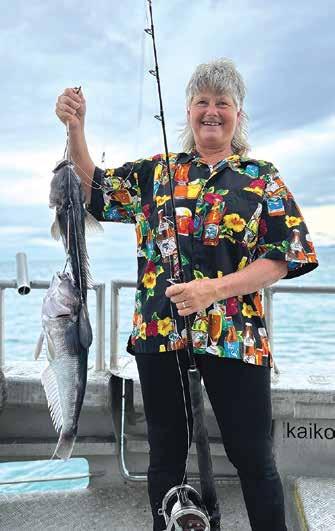
the pig dogs are on the mend, the stags are starting to mutter under their breaths and the partner is home once more. Autumn is beginning
to show her true colours and temperatures are dropping day by day. From here on in, the early morning rises and all their pleasures will be very well utilised indeed.





In February, the Auckland University of Technology (AUT) hosted the 2023 International Abalone Symposium, the major event on the world abalone (pāua ) calendar, which is held every three years. Quite an honour and a responsibility that AUT took on and they did a brilliant job.
The conference was opened on behalf of the New Zealand government by Hon. Rino Tirikatene in his role as Minister for Trade & Export Growth and to cover for Oceans and Fisheries Minister, Hon. Stuart Nash, who had his hands full with Cyclone
Gabrielle smashing his electorate.
Over 220 delegates from 15 countries attended and saw 90 presentations on abalone aquaculture, wild harvest, fisheries science, cultural and indigenous knowledge and more. Also included were field trips


to places like the Leigh Marine reserve, Kaikoura earthquake a ected pāua fishery areas and the Ocean Beach Aquaculture Park near Blu .
Also on hand were trade stands, including local legends from Wettie who managed to sell top New Zealand dive gear to overseas scientists and fisheries managers… well done Darren !
There was a wealth of stu to learn. Here are just three of the presentations relevant to pāua that caught my attention;
The cultural and indigenous knowledge session
Bryan Denny is a lutruwita (the indigenous name for Tasmania ) aboriginal abalone diver operating out of Southport. He outlined the 40,000 years his “sea country” people had been gathering shellfish, especially netepa, abalone. Also an interesting government move to recognise aboriginal fishing in the modern era.
European lutruwita and very good divers they were.
Early French explorer Labillardiere recorded indigenous women divers as being “excellent swimmers who could stay under the water for a long time..”, some early settler observers noted aboriginal divers as doing dives of 3 -4 minutes.
The diver women gathered abalone, crayfish and other edible molluscs. This correlates with the fact that traditional divers in Japan and South Korea were, and still are, women.
International Abalone Society stalwart, Prof. Peter Cook, updated the figures for world abalone production with some startling numbers. Wild harvest abalone production has again fallen slightly to
a bit over 5000
In the seventies it was about 20,000 tonne. Where do we sit ?
New Zealand production at just under 800 mt means we are now one of the last major abalone wild harvest fisheries… anywhere. We are second only to Australia at 2300 tonne.
The next is Mexico at about 300mt. The remainder are much smaller, for example Europe, mostly France, at 40t.


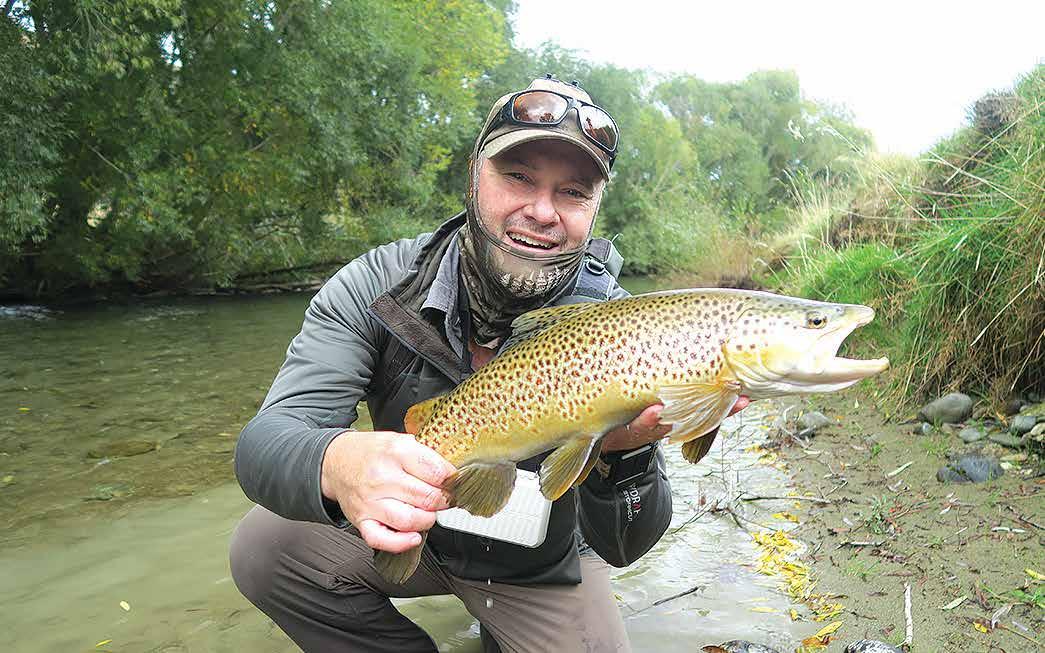
 tonne.
Storm Stanley Paua Industry Council Chairman
Graeme Sinclair doing what he does best
"Natives preparing a meal from the sea" Original print, drawn by Jean Piron in 1817
tonne.
Storm Stanley Paua Industry Council Chairman
Graeme Sinclair doing what he does best
"Natives preparing a meal from the sea" Original print, drawn by Jean Piron in 1817

my nails painted, brunches full signal on my phone!
I’d never even slept overnight in a hut before October. And now here I am with a freezer full of steaks
spiker. How did I get here?! And how can you (as a more experienced hunter) help new people like me get into the sport?
I’ve been buying hunted wild game meat for a while, but last year I thought... surely I can cut out the middle man and go hunting myself? How hard can it be?
I start when I know nothing about hunting? I don’t know anyone who goes hunting. I don’t know anything about
I can hunt. I don’t know what I can hunt. I have no gear: no sleeping bag, no tent, no knife, no backpack. I don’t even have a car!
is Google: I type in ‘hunting course Wellington’ and the NZDA website was the top result. I went to a few club nights and signed up for the HUNTs course. I remember one of the members taking me under
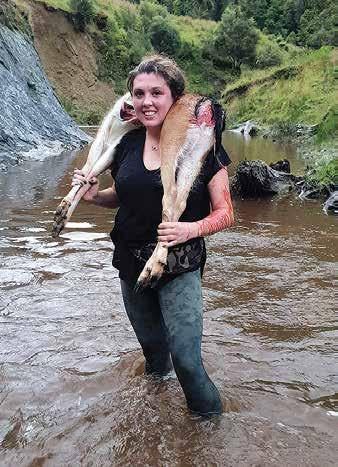

night and I just felt so welcome—maybe I could be a hunter!
The HUNTs course is even more comprehensive than I imagined (shout out to the instructors and volunteers).
everything I needed to know to go from absolute beginner
made some great friends who were keen to get out
Brad (one of the other students from the course) organised for a few of us to head up to a private block in Pātea hill country where there was abundant fallow deer. On the drive up I was so anxious—the course had given me all the info to get me started, but now I was actually going to have to pull the trigger. We were with a couple of experienced hunters, Steve and Mark, who knew the block really well. Before we’d even got out of the ute we could see heaps of deer in the hills. We dumped our stuff at the hut and headed straight out. Brad got a doe within about 30 minutes and then all eyes were on me. It felt like it anyway.
I was all lined up and watching a small group of fallow deer in a gap in the bush for what felt like a lifetime. I wanted to be sure I had a clean shot and that, if I got a doe, there wouldn’t be an orphaned baby. And, although I wont admit it if you ever bring it up to my face, I was nervous. Taking a life is serious, even if it aligns with my values. I needed to bite the bullet and so did the spiker! His head was behind a vine, but I could see his shoulder clearly, so I pulled the trigger. Down straight away. I’d done it. I wasn’t a city girl anymore. I’m now!

When we got to him, I didn’t know what to think. Of course, there was adrenaline and excitement

was also a bit of sadness; he was so pretty and soft. Ok, maybe I am still a city girl!
When we got back to Welly we skinned the deer and gave them to the butcher. Butchers comments were ‘bit small, shoot a bigger one next time!’. Nice of him to keep me humble. Haha!
The HUNTs course, and the willingness of other hunters to share their spots, give us access to their chillers and help out meant that us newbies could go from zero to a freezer full of mince.
If you’re a more experienced hunter, I really encourage you to talk to new hunters at club nights, volunteer to help out on HUNTs courses, take a newbie under your wing, share your top tips
and hunting spots with them, guide them through skinning and bush butchery, or donate your old gear to them or your local HUNTs course.
If you’re a new hunter,
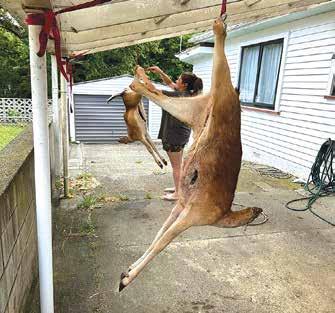





























In 2010, three South Islanders (Laurel Teirney, Alan Key and the late Nelson Cross) developed a document titled Securing a Fishing Future, which sought to address the historical lack of attention towards improving fisheries that are important to recreational fishers.
Securing a Fishing Future proposed to replace the fragmented representation of recreational fishing interests with a unified voice by establishing a selffunded, single organisation. This proposal attracted broad support amongst South Island recreational fishers. However, it faltered when considered by North Island recreational fishing interests and the then Ministry of Fisheries.
In 2016 and 2017, Randall Bess researched recreational fisheries in New Zealand and overseas, which led to a series of recommendations in his final report titled, The Future Catch. Central to these recommendations was the establishment of a professional, well-funded organisation like that set out in Securing a Fishing Future.
In 2019, a group, including
Randall Bess, Alan Key and other South Islanders, met to design what has become Fish Mainland, which was incorporated in 2020 to represent South Island recreational fishers’ interests.
In 2021, Fish Mainland gained charitable status. With this status came a broadening of its purpose beyond representation of recreational fishing interests.
Fish Mainland’s purpose now is to coordinate and assist the South Island marine fishing community in restoring and sustaining fisheries resources for the benefit of all who fish in the waters of the South Island. Fish Mainland’s Board of Directors considers the changes required for charitable status better reflect our focus on the sustainability of fisheries and the marine environment and our collaborative approach with government, Iwi and the other fishing sectors and interests to ensure sustainability. Accordingly, we support ge overnment’s e orts to improve the collection of data to make the best management decisions for ‘shared’ fisheries, those
fisheries where all fishing sectors share an interest in taking more of the fish stock or stocks, and they value their share quite di erently.
For this purpose, MPI’s Sustainable Food & Fibre Futures has funded the development of a recreational fisher selfreporting app, appropriately named Mainland Catch. Mainland Catch is an intuitive and simple app designed by Fish Mainland and Fisheries New Zealand (MPI) and tested by South Island fishers. Our website has links to download Mainland Catch and videos on how easy it is to use: www.fishmainland.nz
The benefit for fishers is in providing a basis for action or a recommendation to improve fisheries that are important to recreational fishers. Better data may also provide a basis for reducing environment impacts that benefit all fishing sectors. Our focus is now on expanding Mainland Catch to accommodate the recreational Kaikōura coastline pāua fishery that will be open from 15 April to 15 June.
As we know, the Kaikōura coastline pāua fishery was

poorly managed last year during its first opening since the 2016 earthquake. During that opening, the recreational allowance was exceeded more than eightfold.
Fish Mainland’s Board of Directors strongly consider that recreational fishers must limit their total catch to ensure sustainability of any fish stock. This means
fishing within size limits, daily bag limits and the Ministerial-set allowance. If those limits or allowance warrant changes, then the best way to work towards change is with supporting data, which reduces politics as the driver for change. We encourage all fishers to do their part in sustaining fisheries by fishing within set limits
and using Mainland Catch to record their catch and e ort data and, therefore, contribute towards improved management decision making.
We also encourage you to show your support for Fish Mainland by becoming a member for free and making donations via our website or bank account no 03-0823-0101056-000.







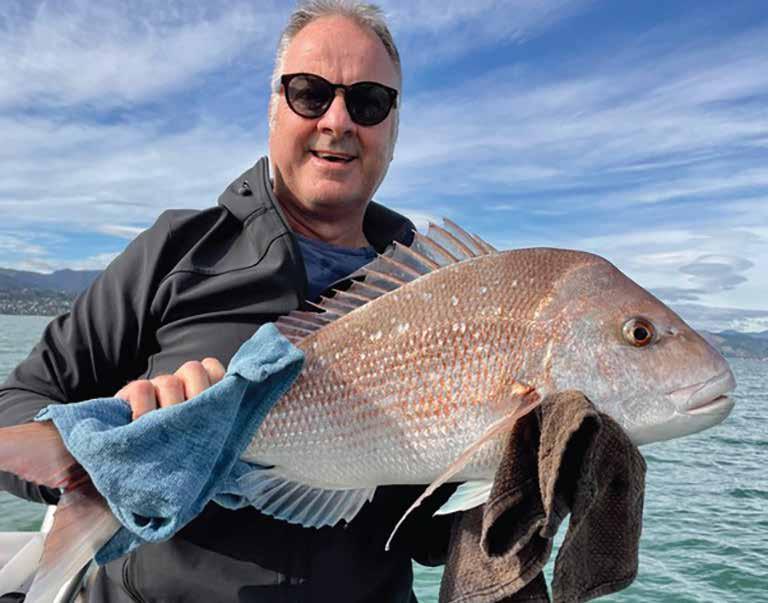
swing of catching the bigger this season.
Enjoying a break from the fast pace life of the World of Wearable Arts, David and wife Anna enjoy regular trips into the bay aboard their launch, often with friends, targeting the abundant snapper.
Unfortunately WOW wasn’t the deck when this nice snapper came to the surface.
“Get the net, Anna… get the net,” was the initial catch cry, but in the melee of boating the bronzed beast… the net went overboard while the snapper came inboard!
With already a bin full
friends, David consigned his catch to follow the net.
Within the hour, they were spotted at a local chandlery purchasing a BIGGER net… perhaps in anticipation of a bigger WOW to follow!
Or perhaps… World of the Wearable Net has a less embarrassing ring to it than—World of the Disposable Net!
Daryl Sykes previews the season that might and reviews some of the season that was, as…
allowances for customary, recreational and illegal referenced as “other mortalities”—should have 01 April, and commercial assembled their annual portfolios in anticipation of the total allowable ahead.
The export markets, and our continued access to them, are as important to the economic wellbeing of the lobster industry as the abundance of rock lobsters in each of the nine rock lobster (CRA) management areas. In the previous season, the principal live export market to China has been reasonably strong in both demand and price, had to adjust to “pulses” in market preferences and prices.
There is talk of the China market again being directly accessible to the Australian rock lobster industry but the New Zealand industry has not enjoyed any real premium in their current absence and there have
of Australian lobsters transhipping from dealers in Vietnam, Thailand and Hong Kong to keep their brand alive in the marketplace.
Across the nine CRA areas, stock abundance is strong in most and otherwise variable in two. The southern
Southland (CRA 7 and CRA 8)—are strong and current TACCs will undoubtedly constrain landings for
Similar circumstances prevail in Canterbury— Marlborough (CRA 5) and the Chatham Islands (CRA 6), where the TACCs are well matched to observed stock abundance in the most recent season. Fishermen in the Wellington—Hawkes good catch rates through months of 2023, in spite of a challenging weather pattern that threw up sustained periods of easterly swells and rough seas.
Further north into the Gisborne—East Coast region (CRA 3), weather has had a

In addition, CRA 3
persistent easterly weather and large swells, which resulted in prolonged periods of vessels being grounded. It was a tough season— unusually tough—and there must now be some concern over the short to medium term impacts of the lobster mortalities attributed to the cyclones.
Cyclone fallout historically measurable
The situation need not be a disaster—there have been other similar events in the past: Cyclone Bola being one of the most publicised, when tonnes of lobsters were lost to the rapid changes in
In the same events, miles of coastline are covered in sedimentation when the rain brings hills to meet the sea. Fortunately, the ocean does
mud and silt from inshore reefs and the rocky platforms that provide excellent larval settlement substrate for rock lobsters (and for pāua).

And the lobster mortalities observed from Cyclone tonnage terms, proved to be of only minor consequence to CRA 3 stock abundance subsequently. If there is a worry about the recent damage it will be about the cumulative effect of such
a relatively short time. The alignments between larval settlement and subsequent and the obvious storm damage to lobsters over the past year or so will determine just how large the ‘hole’ in future CRA 3 stock abundance will issues have also resurfaced in CRA 3 and industry are currently working with marae committee representatives to implement an agreed mechanism to ensure sustainable use of localised areas.
Going north again and into the Bay of Plenty (CRA 2) is far more positive in terms of stock abundance but the dark cloud of additional area closures and marine protection measures hangs over the CRA 2 industry.
The Hauraki Gulf remains in the spotlight of government agencies and conservation groups. been demonised to the extent that very populist policy options are getting the greatest publicity and the ministry responsible abandoned any management interventions that would be consistent with the property rights regime which underpins the New Zealand quota management system (QMS).

The recent decision to close the Gulf scallop users is sure to be of concern to commercial operators and will probably leave many divers scratching their heads management responsibility to local Hapū is a big call by the ministry, but one they seem increasingly willing to make.
Moving into the Northland
where industry participants have made a strong case for no adjustments being made to TAC or TACC
The recent Environment Court proceedings at which the alleged failure of the ministry to manage environment overshadowed the decades long history of managing the CRA 1 stock to sustainable limits. The ministry has shown itself to be somewhat gun shy as a result of that case. For example, in refusing to even discuss any consideration of an adjustment to the CRA 2 TAC/TACC in spite of stock monitoring data and the annual rapid update
positive increase in CRA 2 stock abundance.
There is strong debate from the CRA 1 industry about the ministry wanting to further reduce the CRA 1 TACC in an effort to counter ecosystem effects allegedly connected to the relationship between lobster and kina abundance. The
was not available at time of publication—in part because the former Minister not announced his decision before he was forced to stand down, and the new Minister, Hon David Parker, needed time to be briefed and to consider his response.
odd month and date on which to commence ‘a year’, but in spite of the obvious association with foolishness, it does work for the rock
industry, with the politics becoming more uncertain than the weather; but during April rock lobster industry participants will be setting gear, sorting out their business relationships with quota share owners, processors, and crew and getting increasingly into gomode as they wind towards March 2024.
of people. I’ve never had a dog lie to me, shit on me and, up until my current pup, I could have said stolen from me (she’s blown that anything apart from given me unconditional love and loyalty.
Having said that, I have had dogs that unintentionally have got me into a bit of trouble from time to time. Quite a while ago, I wrote in this paper about a red heeler called Troupe. He got me into a fair bit of strife.
A few instances spring to mind. I had him when I was a cop on an outback settlement in the Northern Territory. A complaint came in one Sunday morning that Troupe had chased a camp dog into the church during a service and given it a bit of a towel up right beside the altar. That took a bit of sweet talking. Another was him doing raids most afternoons on the Tracker’s house that was always chock full of relatives. To see them bailing out windows was amusing at the time, but I’d hate to think of the consequences today. Imagine the headlines: Cop’s savage dog attacks innocent citizens, or something like that.
Probably the one that got me into the most trouble, and Troupe living another couple of days, was a bit touch and go was when he got sick of the kids teasing him when they went past the police house on the way to school. One day, at the end of classes, Troupe hid in the long grass outside the school. I don’t know
whether he got the right ones but there were a few bites dished out. One of the teachers was a bit anti-police and he wanted blood. Some very skilled negotiation and a sympathetic O/C of the station kept Troupe breathing.
Another dog that caused me a few headaches was a german shepherd called Ceza. I suppose a lot of these problems were self-
a police dog, and I was the one who gave him the orders. Having said that, he was strong-willed and thought he knew better than me—like the times he thought the burglar or other nefarious individual he caught needed a few more chews, after I had called then dragged him off. He got off side with quite a few of the police staff due to him being colour blind. A blue uniform meant nothing to him. In a disorder or crowd-control situation, the staff on several occasions learned very quickly to
offenders. But, like Troupe, he bequeathed total loyalty to me whether I asked for it or not.
I purposely chose the dog subject this month because very soon a lot of us are going to be spending time with our mates with four legs. We’ll be asking them to continually go into freezing water, through thick shitty mud, gorse or blackberries and other places that, without a dog, we wouldn’t get our ducks and pheasants once we’d pulled off a good shot. They won’t moan, they won’t give up because we’ve pushed them too hard and they won’t stop being loyal.
in May when your wife or partner goes crook when at bedtime you kiss the dog and give them a pat on the head, you’ll be able to explain why.
Catch you next month.


grandsons from Dunedin, wait to get on the water during the school holidays. Heading out toward Abel
plenty of excitement and anticipation in the air. Not to mention chatter.
Nine-year-old Nox was quickly in but a little disgruntled to start with. He thought he’d snagged a rock but the heavy weight soon morphed into this sand





using
551 SP
and
Eleven-year-old Sol was
he

A little write up on a bait I rate one of the best in the surfcasting game guns around the country and top surfcasters I have
Vijay Nikora Raj continues his sound advice for surfcasters this month with his take on using octopus for bait.
especially for surfcasting competitions.
in their bait bins. You may that has no smell to us when fresh, so appealing to whopper snapper?
Beats me—but they love it.
It’s a bait that takes a bit of getting used to and is hard to source if you are not a diver or do a lot of rock hopping. In some cases it’s gold,

Once you have peeled off the outer layers of the tentacles, you expose
tube onto my hook as if I’m putting a sock on the hook, then cotton up.
It’s also nicknamed the ‘heave and leave bait’, as it could sit (soak) out there for
hours before you get onto a it is a good solid snapper. I don’t know why, but mostly the bigger snapper take the occy baits, while your second rod with anchovy
And if you’re getting plagued by pesky small kahawai, they won’t touch the occy bait so more time for that big red to come by.


Here’s an example. I was couple of weeks or so ago and had two rods out. One rod had a mixture of cray and anchovy baits, while the other had occy on it. All day, crabs hammered the baits, with the softer anchovy baits only lasting 10 minutes before getting smashed. The occy bait, however, is so
tough crabs take a hell of a long time to get it off and I ended up catching two snapper while they tried. Occy saved the day!
It’s a bait that requires patience and some nights
my opinion. Check out my Facebook page: Off the sand-Chasing tides NZ
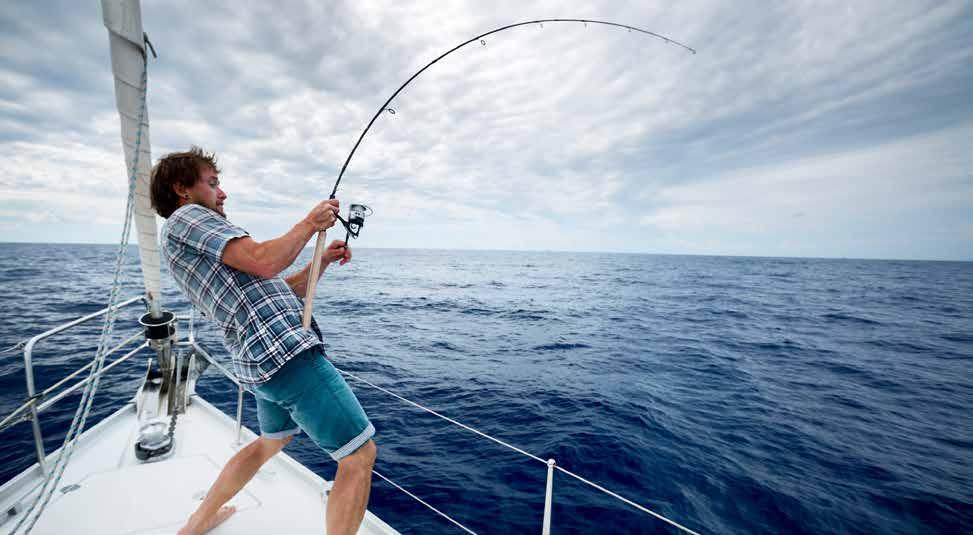
$195,000










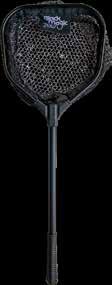


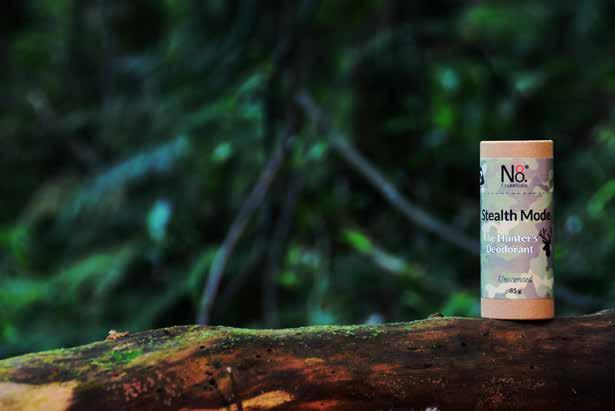


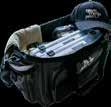
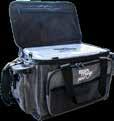

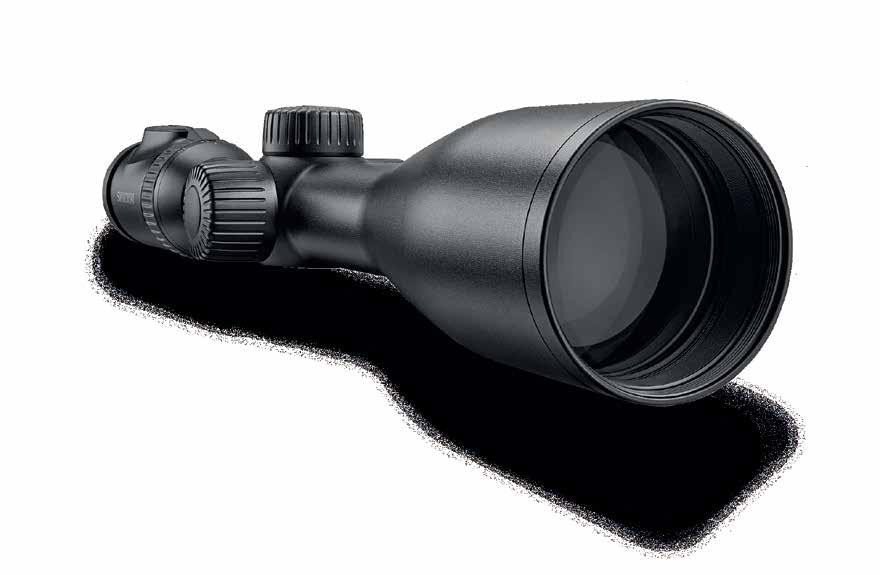
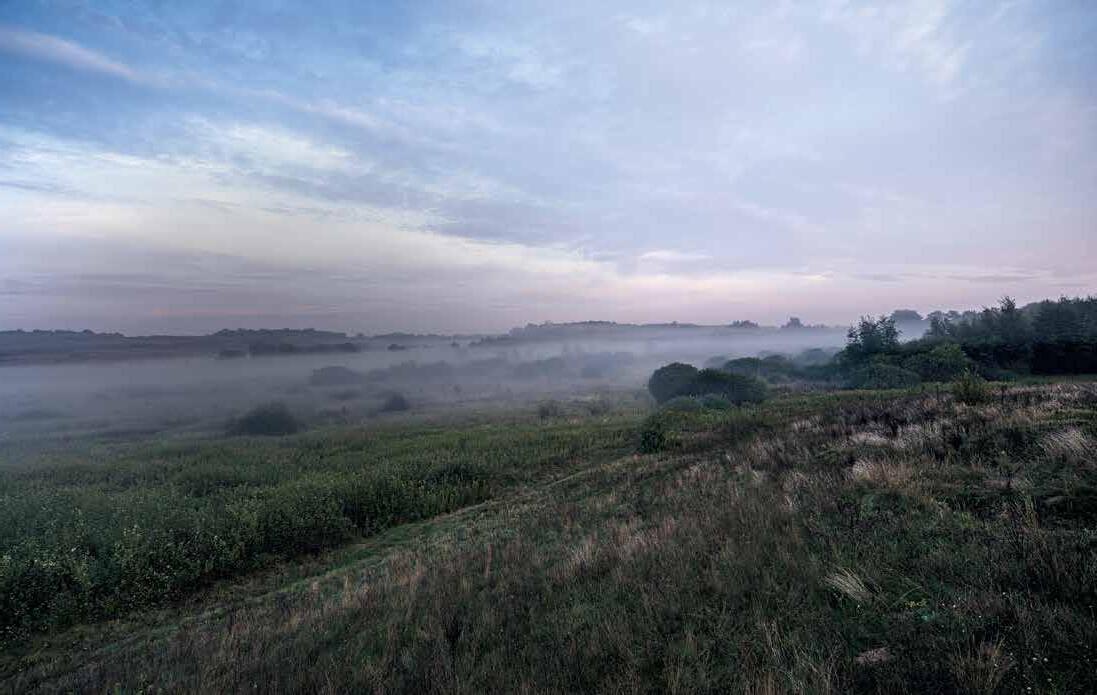
Pulsar have led New Zealand’s hunting and professional thermal imaging market for over a decade, with high quality and innovative products. Many of the features that we take for granted on a thermal imager were developed by Pulsar. Their latest product line for 2023 includes a pixel resolution of 1024x768. Sensor resolution is an important imagers alike. More pixels provides at night and in adverse conditions. the performance of each pixel and the sensor overall is also important. Pulsar Sensor resolution
equivalent of almost four and half 384x288 sensors.


Relative size of sensors with pixels of the same pitch
The pixel pitch of a sensor relates to pixels can form a more detailed image

Pulsar have launched two new Merger LRF bi-oculars for 2023, each of which compliments their existing Merger LRF XP50 which was launched last year and became an instant success with hunters and professionals alike.

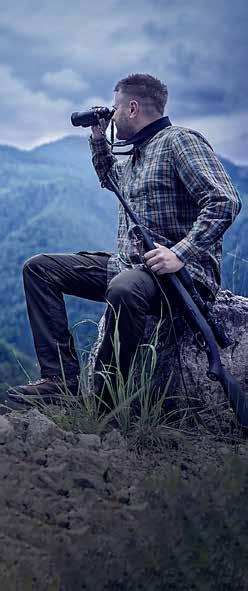
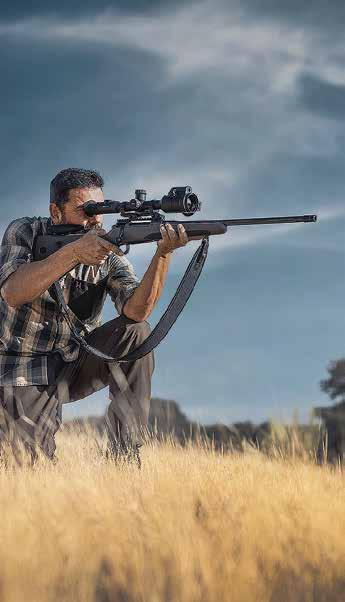
A multispectral imaging system is responsive to two or more distinctly different electro-magnetic wavebands or

performance of the night vision channel.
end devices use digital night vision. These
Colour glorious colour
Pulsar have developed multispectral
The colour channel uses a high
Pulsar have the led the digital night vision market since the introduction of the Pulsar Digisight N550 back in 2010. This riflescope had groundbreaking features and excellent performance.

riflescope. The thermal performance of the
an infrared illuminator for use in total darkness. The supplied illuminator is
procedures of the Pulsar Thermion thermal
diaphragm for reducing or increasing light passage to the sensor.
grass and for pigs and deer that are not thermal scope.
• New Zealand Police HQ received their latest consignment of Pulsar Merger
The 33 devices supplied improves
to help Police keep our communities safe.
• Coastguard New Zealand’s latest dangerous conditions in their area.
• Department of Conservation and for hundreds of thousands of pests
Pulsar Thermion Duo DXP50 TAfter much secrecy, Pulsar has now thermal monocular, the Pulsar Telos LRF XP50.
understatement!
Remarkable NETD <18mK performance
thermal imaging optics. It is the smallest temperature that can differentiated
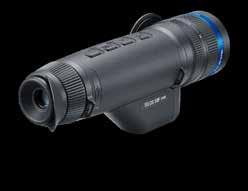
The Telos can be upgraded.
‘Fit it with powerful optics, a higher resolution sensor electronics, or equip the thermal imaging additional optical channels so that you always have the latest device but at the mere cost of upgrades.’ The Telos range
New features of note
• Mechanical zoom ring.
underestimate the importance of this.
• New Battery design
socket for direct charging. Its 6400 continuous use.
• Redesigned carry bag. harnessed around the shoulders and
comment on its effectiveness.
• Ambidextrous design. The hand strap
relocation of the strap to either side of top is ideal for left and right hand use.
• This
1000m. I have ranged trees at over the same performance from the Telos.
• It looks gorgeous!
A warm summer breeze gently drifted past me, I quietly shifted positions making sure the wind was blowing in my face so no unsuspecting rabbits would spook.

Pulsar Young’uns contributor Daniel with a pair of Bennett’s wallabies



continue to assist me for a long time.
Scan here to View the thermals in action here
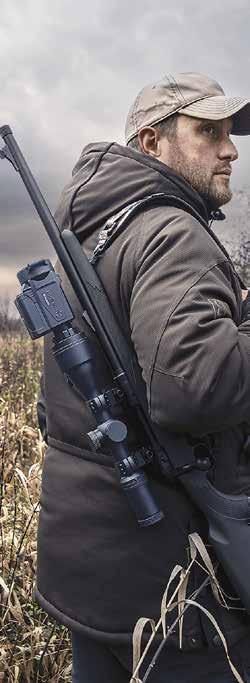


Always striving for improvement, Pulsar lifts its Krypton thermal clip-on to the next level and adds an exciting new stablemate.
Performance
• • from f1.2 to f1.0
• • More advanced image processing
Userbility •
updates and video streaming

compare to the original:

taking precision shots at medium to long
